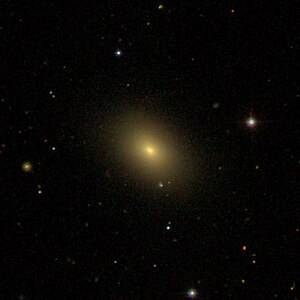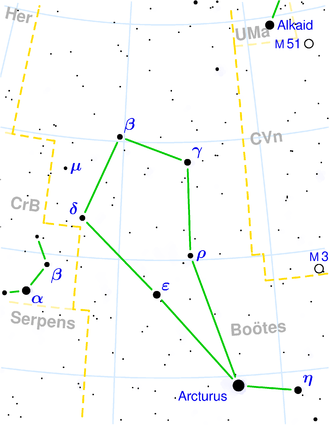NGC 5598
| Galaxy NGC 5598 |
|
|---|---|

|
|
| SDSS recording | |
| AladinLite | |
| Constellation | Bear keeper |
|
Position equinox : J2000.0 , epoch : J2000.0 |
|
| Right ascension | 14 h 22 m 28.3 s |
| declination | + 40 ° 19 ′ 11 ″ |
| Appearance | |
| Morphological type | S0 |
| Brightness (visual) | 13.1 mag |
| Brightness (B-band) | 14.1 mag |
| Angular expansion | 1.6 ′ × 1.1 ′ |
| Position angle | 50 ° |
| Surface brightness | 13.6 mag / arcmin² |
| Physical data | |
| Redshift | 0.018236 +/- 0.000103 |
| Radial velocity | 5467 +/- 31 km / s |
|
Stroke distance v rad / H 0 |
(249 ± 17) · 10 6 ly (76.2 ± 5.3) Mpc |
| history | |
| discovery | Wilhelm Herschel |
| Discovery date | April 29, 1788 |
| Catalog names | |
| NGC 5598 • UGC 9209 • PGC 51354 • CGCG 220-007 • MCG + 07-30-04 • GC 3867 • H III 733 • h 1796 • LDCE 1055 NED001 | |
NGC 5598 is a 13.1 mag bright, lens-shaped galaxy of the Hubble-type S0 in the constellation Bear Keeper and about 249 million light-years from the Milky Way.
It was discovered on April 29, 1788 by Wilhelm Herschel with an 18.7-inch reflector telescope, who described it as "vF, vS".
